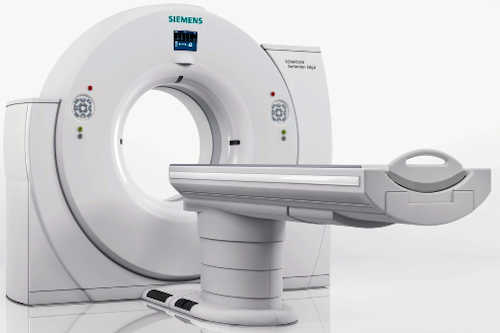Computerized Tomography (CT) Scan

What is Computed tomography (CT)
Computed tomography (CT) is used to produce detailed 3D images of the body. CT scans are very quick scans which use special x-ray equipment and computers to produce images that provide more comprehensive information than regular X-rays.
A CT scanner produces very thin sliced images of organs, bones, soft tissues and blood vessels. CT scans are used to diagnose various conditions including, but not limited to, bone or internal organ injury or disease, cancer, stroke and musculoskeletal disease. They are also used to guide further tests or treatment such as to take biopsy samples or to drain fluid and to monitor conditions such as response to cancer treatment.
For head, sinus, chest, HRCT, bone scan, spine, hips, pelvis, urinary tract, adrenal, temporal bones, facial bones and neck CT scans without contrast, please see CT Scans without Contrast
For chest and abdomen, chest, neck, kidney, pancreas, liver Angiogram, Venogram CT scans with Intravenous (IV) contrast, please see CT Scans with Intravenous Contrast
For abdomen/ pelvis with chest/ abdomen/ pelvis, urinary tract and Enterography CT scans with contrasts, please see CT Scans with Oral and Intravenous Contrast
For colonoscopy virtual, colon, contrast enema referrals, please see CT Scans with Bowel Preparation
For guided lumbar nerve root injections, please see CT Guided Lumbar Nerve Root Injection
For guided cervical nerve root injections, please see CT Guided Cervical Nerve Root Injection
Last updated18 Feb 2022


